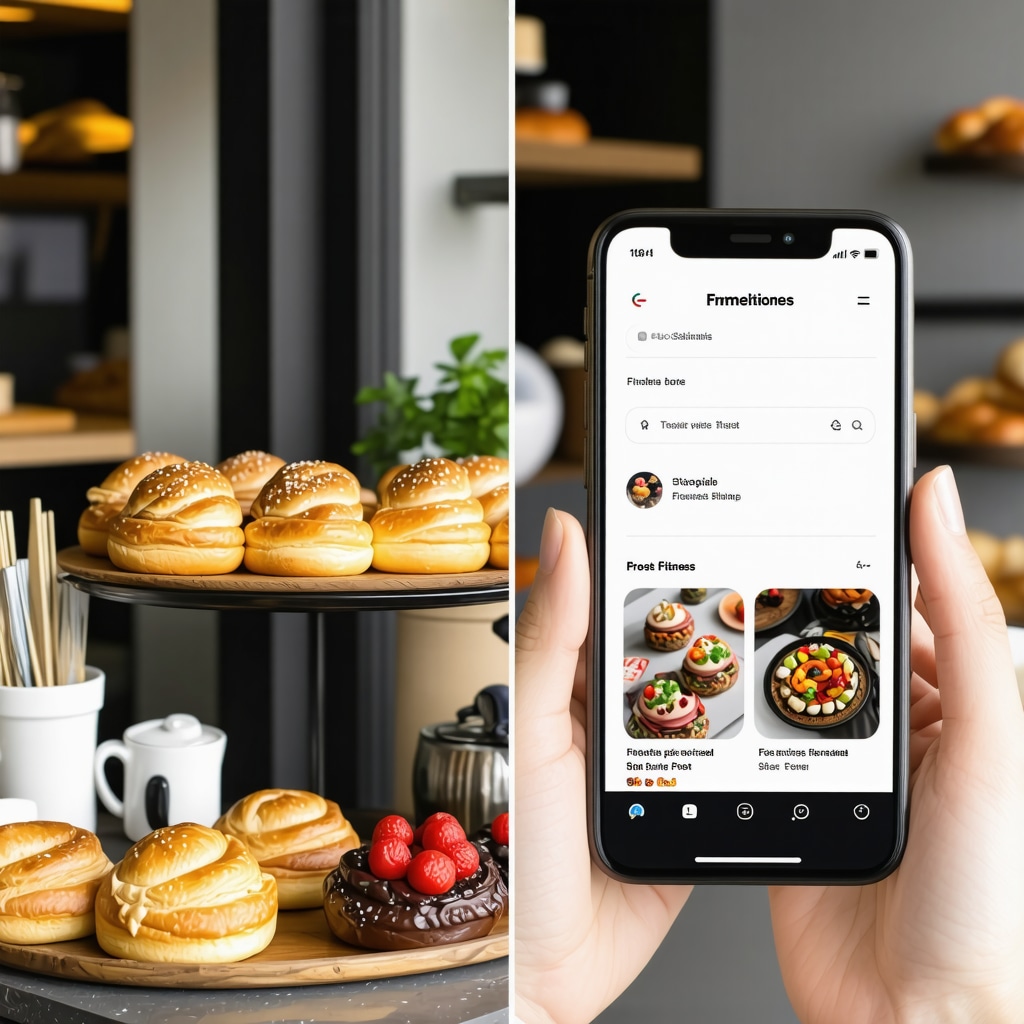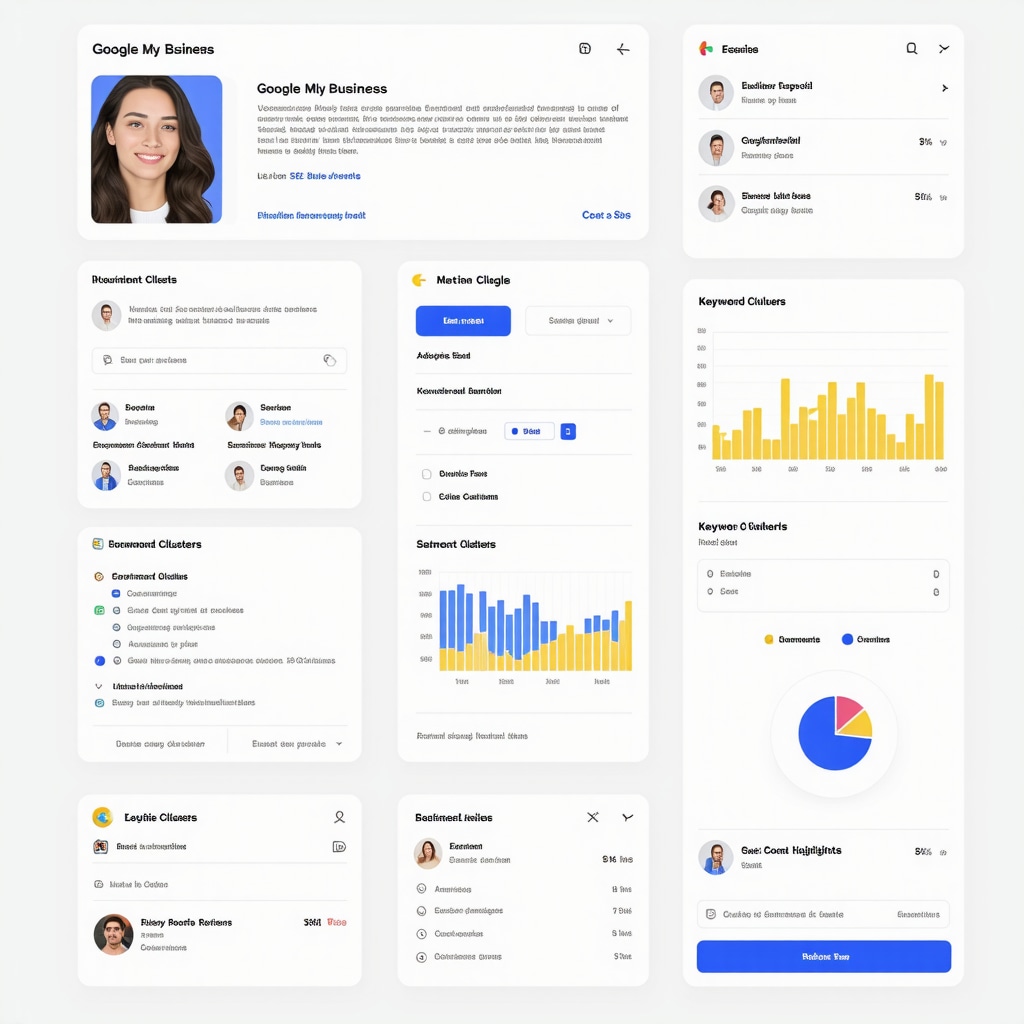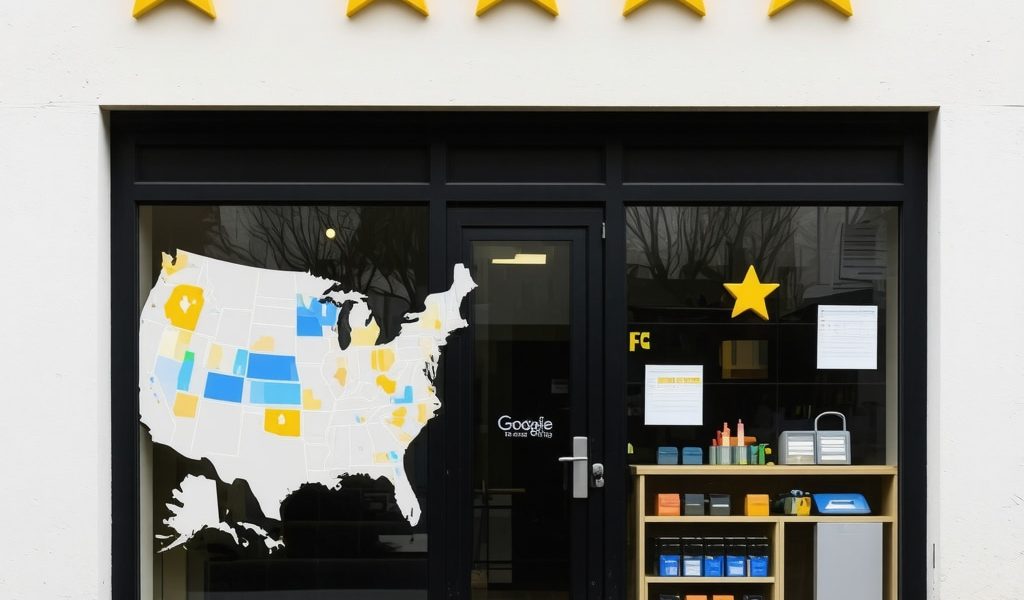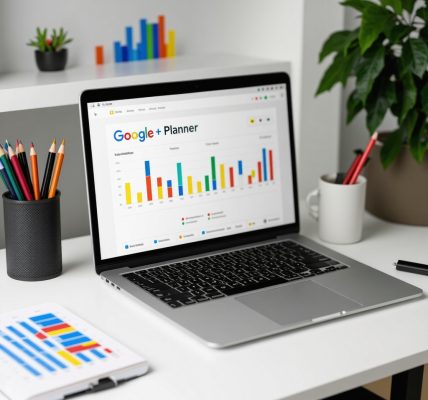Unlocking the Power of Google My Business Reviews for Local SEO Triumph
In the fiercely competitive landscape of local search, mastering Google My Business (GMB) reviews is no longer optional—it’s a strategic necessity. Reviews do more than just reflect customer satisfaction; they actively influence your business’s visibility and credibility in local search results. Understanding how to leverage GMB reviews effectively can dramatically elevate your local SEO performance and attract more targeted customers.
Crafting a Review Strategy That Resonates: Beyond Just Asking for Feedback
Successful businesses don’t merely solicit reviews; they cultivate an ongoing dialogue with customers that inspires authentic, detailed feedback. Encouraging specific, experience-based reviews enriches your GMB profile with quality content that search engines and potential clients value. For instance, a local café that prompts patrons to comment on their favorite seasonal latte or cozy ambience generates unique, keyword-rich reviews that boost relevance in search queries.
How Can Businesses Ethically Encourage More Positive and Relevant GMB Reviews?
Transparency and respect are paramount. Businesses should invite reviews through personalized follow-ups, whether via email or SMS, making the process simple and convenient. Offering exceptional service naturally leads to positive reviews, but explicitly requesting feedback on recent interactions can increase review volume. Importantly, incentivizing reviews must comply with Google’s guidelines to maintain trustworthiness and avoid penalties. Platforms like GMB review generation best practices provide actionable frameworks to balance encouragement with ethical considerations.
Responding Strategically to Reviews: Building Local Authority and Trust
Responding promptly and thoughtfully to all reviews—positive or negative—signals to Google and customers that your business is engaged and reliable. Tailoring responses with local keywords and addressing specific feedback demonstrates expertise and fosters community trust. For example, acknowledging a visitor’s delight in your neighborhood-based service can reinforce local relevance, a critical factor in Google’s local ranking algorithms.
Integrating Review Insights into Your Broader Local SEO Efforts
Reviews are a dynamic source of user-generated content that can inform your local SEO strategy. Extracting common themes and keywords from reviews can guide the optimization of your GMB listing and website content, aligning with what customers actually seek. Combining these insights with citation management and Google Maps SEO techniques creates a robust local presence that stands out in the crowded marketplace. Explore comprehensive approaches in unlocking Google Maps SEO tips for local visibility.
For authoritative insights, the local SEO community often references Moz’s research on review impact, which affirms that review quantity, velocity, and diversity significantly correlate with higher local search rankings (Moz Local Search Ranking Factors Study).
Have you experienced a noticeable uplift in local traffic after optimizing your GMB reviews? Share your story or questions below to foster a community of learning and success.
Elevating Your Local Presence with GMB Photos: More Than Just Visual Appeal
One of the lessons I learned early on in managing Google My Business profiles is how photos can dramatically influence user engagement and local search rankings. It’s not just about uploading any picture; it’s about curating images that tell your business’s story authentically and strategically. Photos showcasing your storefront, team, products, or services add credibility and invite potential customers to envision their experience with you.
For example, when I helped a local bakery optimize its GMB listing, we focused on high-quality images of freshly baked goods and the cozy interior. This visual storytelling led to increased clicks and visits, highlighting how photos act as mini advertisements in local search results. Adding geo-tagged photos can also enhance local relevance, a tactic supported by local SEO experts who emphasize image optimization as a key ranking factor (how to optimize Google Business photos for more engagement).
Using Google My Business Posts to Connect and Convert
Beyond photos, GMB posts offer a dynamic way to share timely updates, promotions, and events directly on your profile. I’ve found that consistent posting keeps your business fresh in Google’s eyes and informs potential customers about what’s new. For instance, a local gym I consulted started posting weekly fitness tips and class schedules, which not only boosted engagement but also helped them rank for relevant “near me” searches.
Crafting posts with clear calls to action and relevant keywords can drive traffic and conversions effectively. Plus, they show that your business is active and responsive, which builds trust. If you’re curious about mastering this, check out best practices for GMB content updates to boost your local leads.
How Can You Balance Quantity and Quality in GMB Content Updates?
This question often comes up in conversations with business owners. From my experience, the key is consistency without sacrificing value. Posting too frequently with generic content can dilute your message, while infrequent updates may cause your profile to appear inactive. I recommend setting a manageable schedule—perhaps one or two well-crafted posts weekly—that aligns with your marketing calendar and customer interests. Also, monitor engagement metrics on your GMB dashboard to refine your approach over time.
Practical Tips for Integrating GMB Visuals and Posts into Your SEO Strategy
Here are some actionable insights I’ve picked up along the way: always use descriptive filenames and alt text for your images incorporating local keywords; geo-tag photos when possible; use posts to highlight unique selling points and seasonal offers; and link your posts to relevant landing pages on your website to boost conversions.
Moreover, syncing your GMB content strategy with overall local SEO efforts, including citation management and keyword research, creates a cohesive presence that search engines and customers appreciate. If you want to dive deeper into integrating these strategies, resources like comprehensive local SEO optimization techniques can provide a holistic framework.
Have you experimented with GMB photos or posts yet? What results or challenges have you encountered? I’d love to hear your stories or questions—sharing your experience could inspire others in our community.

Harnessing Sentiment Analysis of GMB Reviews to Refine Local SEO Strategy
While collecting Google My Business reviews provides quantitative benefits, diving deeper into the qualitative aspects through sentiment analysis elevates your competitive edge. By employing advanced natural language processing (NLP) tools, businesses can decode nuanced customer emotions and pinpoint specific strengths or pain points. This granular analysis informs tailored content updates, service improvements, and targeted keyword optimization that resonate authentically with your local audience.
For example, if sentiment analysis reveals recurring praise for your “friendly staff” and “quick service,” integrating these phrases strategically into your GMB description and posts amplifies relevance. Conversely, identifying subtle negative sentiment patterns allows proactive reputation management and operational adjustments before issues escalate.
Can Sentiment Analysis Influence Google’s Local Ranking Algorithms?
While Google has not publicly confirmed sentiment analysis as a direct ranking factor, the indirect benefits are substantial. Enhanced customer experience documented through positive sentiment naturally leads to more positive reviews and increased engagement metrics, which Google does consider. Additionally, content informed by sentiment insights tends to align better with user intent, boosting click-through rates and dwell time—signals that reinforce local authority.
Industry research, such as the Search Engine Land report on sentiment analysis in SEO, underscores how leveraging this data fosters smarter content strategies that indirectly improve rankings.
Leveraging Structured Data Markup for Enhanced GMB Integration and Rich Results
Implementing structured data markup, specifically LocalBusiness schema and Review schema, on your website complements your GMB efforts by signaling critical business details and review information directly to search engines. This technical SEO tactic enriches search results with review stars, business hours, and location details, enhancing click appeal and user trust.
Beyond basic schema, integrating GeoCoordinates and OpeningHoursSpecification aligns your web presence with your GMB listing, creating a consistent and authoritative local footprint. This consistency is crucial because discrepancies can dilute your local SEO strength and confuse both users and search engines.
Advanced Tactics for GMB Content Synchronization Across Platforms
Synchronization between your GMB posts, website updates, and social media channels maximizes reach and reinforces your local brand narrative. Utilizing automated content management tools to schedule and tailor posts ensures timely, relevant messaging that adapts to evolving customer interests and seasonal trends.
Moreover, incorporating localized keywords and UTM parameters in your GMB posts’ links enables precise tracking of referral traffic and conversion attribution, empowering data-driven marketing decisions. This holistic approach not only amplifies local search visibility but also deepens customer engagement across multiple touchpoints.
For a comprehensive guide on implementing schema markup and cross-platform content strategies, refer to the authoritative resource from Google’s Structured Data Guidelines for Local Businesses.
Have you experimented with sentiment analysis or structured data markup? Share your insights or challenges to foster a knowledge-rich community focused on local SEO mastery.

Decoding Review Patterns: Harnessing AI for Deeper Customer Insights
Delving beyond basic sentiment analysis, advanced AI-driven clustering techniques can identify latent themes within GMB reviews, unveiling hidden customer priorities and competitive differentiators. Employing machine learning algorithms allows businesses to segment feedback by demographics or purchase behaviors, enabling hyper-personalized marketing initiatives and service refinement.
For example, an upscale spa might discover a strong appreciation for “quiet ambiance” among a niche clientele, guiding targeted content creation and localized ad campaigns that resonate distinctly with that segment, thus maximizing marketing ROI.
What Are the Best Practices to Integrate AI-Powered Review Analytics into Local SEO Workflows?
Integrating AI analytics tools such as MonkeyLearn or Lexalytics into your SEO toolkit involves setting up automated pipelines that regularly extract, analyze, and visualize review data. Best practices recommend starting with defining clear KPIs related to customer satisfaction and keyword opportunities, followed by iterative model tuning to enhance accuracy in sentiment detection and topic modeling.
Moreover, aligning these insights with your GMB content strategy ensures that the messaging remains dynamically responsive to evolving customer sentiment, which can help preempt negative trends and capitalize on positive feedback swiftly. For detailed methodology, Moz’s expert guide on AI-powered review analytics offers comprehensive frameworks.
Leveraging Voice Search Optimization Through GMB Content Enhancement
With the proliferation of voice-activated devices, optimizing your GMB profile for voice search is becoming indispensable. This involves tailoring review responses and GMB posts to include natural language phrases and question-based keywords that mirror how users verbally inquire about local services.
For instance, incorporating conversational queries like “Where can I find the best vegan bakery near me?” into your posts and responses can boost rankings in voice search results, which prioritize direct and concise answers.
Implementing Advanced Schema Types Beyond LocalBusiness
Expanding schema markup implementation to include Service, Product, and FAQPage schemas enriches your site’s snippet appearance, leading to enhanced user engagement. Embedding FAQPage schema on pages addressing common customer inquiries, synced with your GMB posts, creates a seamless user journey from search results to conversion.
This strategic markup not only improves click-through rates but also aligns with Google’s increasing emphasis on structured data for featured snippets, particularly in local contexts.
Cross-Channel Reputation Management: Synchronizing GMB with Review Aggregators
Maintaining a consistent and positive reputation across multiple review platforms—including Yelp, TripAdvisor, and industry-specific directories—is critical. Utilizing reputation management software that integrates GMB reviews with these aggregators provides a unified dashboard for monitoring and responding, ensuring no customer feedback goes unnoticed.
This synchronization helps identify discrepancies or fake reviews early, safeguarding your business’s trustworthiness and local SEO standing.
For advanced strategies on multi-platform review management, consider insights from BrightLocal’s reputation management resources.
Are you ready to elevate your local SEO game by integrating these cutting-edge tactics? Engage with our community and share your experiences or questions to pioneer innovative GMB optimization together.

Frequently Asked Questions (FAQ)
Why are Google My Business reviews crucial for local SEO?
Google My Business reviews directly impact your local search visibility by influencing ranking factors such as review quantity, quality, velocity, and diversity. Moreover, they build trust and credibility with potential customers, enhancing click-through rates and conversions.
How can businesses ethically encourage customers to leave positive GMB reviews?
Ethical encouragement involves providing exceptional service, requesting reviews transparently through personalized follow-ups, and making the review process simple. Avoid incentivizing reviews in ways that violate Google’s guidelines to maintain authenticity and trust.
What is the best way to respond to negative reviews on GMB?
Respond promptly with professionalism, addressing specific concerns and offering solutions or clarifications. This demonstrates your commitment to customer satisfaction and can mitigate potential damage to your reputation while improving local SEO signals.
How do photos and posts on GMB influence local search rankings?
High-quality, geo-tagged photos and consistent, keyword-optimized posts increase user engagement, provide fresh content signals to Google, and enhance your profile’s attractiveness, contributing positively to local ranking factors.
Can sentiment analysis of GMB reviews really improve my SEO strategy?
Yes. Sentiment analysis uncovers nuanced customer feedback, allowing you to tailor content, highlight strengths, and address weaknesses strategically. While not a direct ranking factor, it improves customer experience and engagement metrics that influence SEO.
What role does structured data markup play in enhancing GMB integration?
Structured data like LocalBusiness and Review schemas help search engines understand your business details and reviews better, enabling rich results such as star ratings and business hours in search listings, which improve visibility and click appeal.
How can AI-driven review analytics elevate customer insights?
AI techniques analyze large volumes of reviews to identify hidden themes, segment customer groups, and detect trends. This enables hyper-personalized marketing and operational improvements aligned with specific customer preferences and behaviors.
How should I optimize my GMB profile for voice search?
Incorporate natural language queries and conversational keywords into your GMB posts and review responses, focusing on question-based phrases that match how users speak. This enhances your chances of ranking in voice search results.
Is cross-channel reputation management important for local SEO?
Absolutely. Maintaining consistent, positive reviews across multiple platforms strengthens your overall reputation, prevents discrepancies, and supports a coherent local SEO strategy by ensuring all customer feedback is monitored and addressed.
How frequently should I update my GMB content for maximum impact?
Aim for consistent, high-quality updates—typically one to two posts per week—that align with your audience’s interests and marketing calendar. Monitor engagement to adjust frequency and content type for optimal results.
Trusted External Sources
- Moz Local Search Ranking Factors Study: Provides comprehensive research on how reviews affect local rankings, offering valuable data-driven insights for optimizing GMB review strategies.
- Google’s Structured Data Guidelines for Local Businesses: Authoritative resource detailing implementation of schema markup to enhance local SEO and rich search results.
- BrightLocal Reputation Management Resources: Industry-leading guidance on managing reviews across multiple platforms, critical for maintaining a strong and consistent local presence.
- Search Engine Land – Sentiment Analysis in SEO: Expert analysis on how leveraging sentiment data can inform smarter content strategies and indirectly improve search rankings.
- Moz Blog on AI-Powered Review Analytics: Detailed frameworks and methodologies for integrating artificial intelligence into review data analysis to deepen customer understanding and SEO impact.
Conclusion
Mastering Google My Business reviews and content updates is a multifaceted journey that blends strategic customer engagement, technical SEO, and data-driven insights. From ethically cultivating authentic reviews to leveraging sentiment analysis and structured data markup, each tactic enhances your local SEO footprint and builds lasting trust with your community. Photos and posts add dynamic storytelling elements that attract and convert visitors, while AI and voice search optimization prepare your business for the evolving digital landscape. By integrating these comprehensive approaches, your local presence becomes not only more visible but also more authoritative and engaging. Start applying these expert strategies today, share your experiences, and explore further expert content to pioneer your path to local SEO excellence.




The section on crafting a review strategy that goes beyond just asking for feedback really resonated with me. I run a small local bookstore, and I’ve found that prompting customers to share specific experiences, like their favorite book recommendations or the cozy reading nook atmosphere, significantly increases the quality and authenticity of the reviews. It’s fascinating how those detailed, experience-based reviews not only engage potential customers but also enrich the GMB profile with keywords that local search algorithms seem to favor.
I do wonder, though, about the challenge of striking the right balance between encouraging detailed feedback and avoiding making customers feel pressured. Have others found effective ways to invite such in-depth reviews without it coming across as pushy? Also, I’m curious about any automated tools or practices that can help streamline personalized follow-ups for review requests without losing that human touch.
It’s clear that responsiveness to reviews and integrating insights into the broader SEO strategy can be a game changer. I’ve started experimenting with geo-tagging photos to enhance local relevance, and the early signs of increased engagement are promising. I’m eager to hear from others about their experiences with these tactics and what’s worked best in cultivating an active and authentic review presence on GMB.
Kelly’s insights about encouraging detailed reviews resonate with my experience managing a local restaurant. Finding that balance between prompting meaningful feedback and respecting customers’ comfort is delicate. I’ve found that integrating subtle invitation cues during natural conversation—like asking about their favorite dish or atmosphere—often leads to authentic responses without pressure. Automating personalized follow-ups can be streamlined using CRM tools like HubSpot or Mailchimp, which let you segment customers and send tailored requests. However, I always recommend maintaining a friendly, conversational tone in these messages to keep the human element intact.
I’ve also noticed that timely responses to reviews, especially negative ones addressed with empathy and solutions, positively influence repeat patronage and local rankings. Incorporating keywords that highlight community ties or unique offerings in responses tends to bolster local SEO relevance effectively.
One challenge I still face is effectively analyzing the flood of feedback to extrapolate actionable themes without getting overwhelmed. Does anyone here leverage AI tools for sentiment or thematic analysis on GMB reviews? How do you integrate those insights into your broader local marketing strategy? Sharing such experiences could greatly benefit community members looking to optimize their local SEO through smarter review management.
Building on Kelly and Steven’s thoughts, I’ve found the integration of sentiment analysis into managing GMB reviews to be a real game changer, especially for a local service business like mine. Using tools that employ AI-driven sentiment detection helps to swiftly flag urgent concerns and highlight what customers truly value, such as friendliness or quick service—elements that often don’t get as much spotlight without such technology. This allows me to tailor my GMB posts to echo those strengths authentically, which seems to resonate well with both clients and search engines. Besides manually responding to reviews, automated sentiment dashboards streamline my workflow and prevent feeling overwhelmed by sheer review volume.
Regarding the challenge of keeping follow-ups personalized yet efficient, combining CRM segmentation with conversational tone templates has helped keep outreach genuine without sounding robotic. It also respects customer time, which aligns with Google’s transparency guidelines.
What strategies are others using to blend AI insights with their hands-on customer engagement? Have you noticed a direct impact on your local rankings or customer repeat rates when applying sentiment-informed content? Curious to hear how this balance plays out across different business types and scales!
Monica — your point about sentiment dashboards really resonates. We started with a lightweight workflow that might help others: use MonkeyLearn (or Google Cloud Natural Language) to auto-tag new GMB reviews, push flagged negatives to a Slack channel via Zapier, and aggregate theme counts weekly in a simple spreadsheet. That lets a human quickly decide whether to respond publicly, reach out personally, or turn an insight into a GMB post (e.g., celebrate “quick service” or explain a menu change).
For blending AI with hands-on engagement, I recommend: 1) define 3 KPIs (average rating, % of mentions for top 3 themes, and CTR from GMB posts via UTM), 2) automate tagging + alerts, and 3) schedule a short weekly review to turn trends into content or ops fixes. We saw clearer engagement upticks after tailoring posts to recurring praise, and a modest improvement in map impressions within a couple months.
Curious — which single KPI do folks find most actionable for small teams, and what cheap tool has given you the best signal without overload?